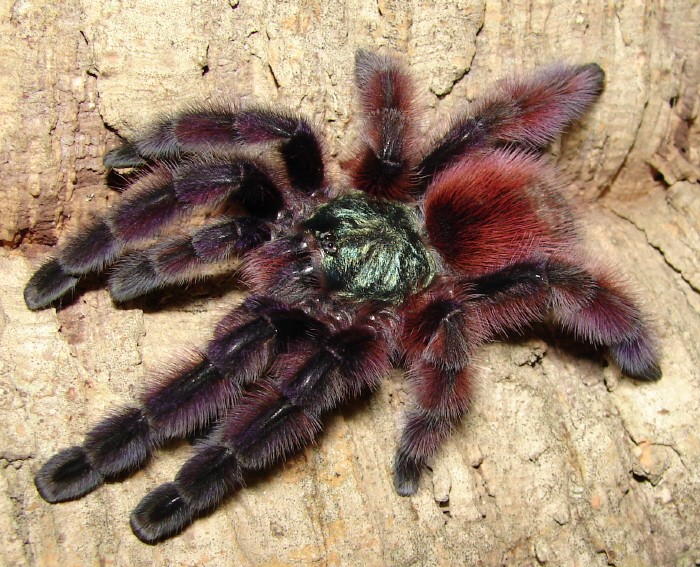
Their mouth openings are like straws and they have barbs on their stomach, which are used for self-defense when danger is near. Tarantulas have fangs, and when they bite, it can be extremely painful. A female tarantula can live to 35 years or more, whereas a male tarantula passed a few months after intercourse. Each molting period is longer than the previous molt. The female tarantula molts her entire life, but a male cannot molt after it reaches its maturity. The eggs hatch and baby tarantulas are born.The female tarantula deposits her eggs into the egg sac.The interesting thing is that even if the male successfully escapes, it will die a few months after the intercourse. The reason why the male has to escape as soon as possible is that the female tends to eat the male after the reproduction is done. Once the female tarantula enters, the male fertilizes her and escapes. After the webbing is made properly, the male tarantula attracts a potential female tarantula and traps it into the web. Keep in mind, it is risky for males to do this because they are closer to human this way.Ī male tarantula has to create a sperm web where it deposits its sperm. When they are looking to mate, the male tarantula leaves its territory so it can find the perfect female tarantula.

After the male tarantula matures, it becomes motivated to reproduce. It is important for male tarantulas to mature before they can start reproducing with female tarantulas.

The biggest threat for tarantulas is humans. The predator starts feeling irritated and flees. When the tarantula starts to rub these barbs (or hairs) together, they get released into the air, attacking the predator. When a tarantula knows it’s in trouble, it protects itself with the sharp barbs on its abdomen. The injected venom turns the preys into liquid so the tarantula can consume it without any problem.įor the smaller species, it is hard to chew on solid foods, but the larger ones are strong enough to eat the prey without having to paralyze it. Then, with the help of their fangs, they kill the prey. Their tactic is to grab the prey with their front legs and then they bite into the prey, injecting its venom into the prey so it is paralyzed. When they feel that prey is near, they start moving quickly and attack the prey by pouncing on it. They have the ability to feel vibrations of their prey with the hair on their legs and body. There are a few species that leave thin, small silk lining outside their burrow that successfully allows them to be alerted with the news that their prey is near.Īs mentioned before, tarantulas go hunting during the night. Tarantulas have to be extremely sneaky when they are hunting.

Toads and foods – (learn more about toads in our article here.)Ī major difference between a spider and tarantula is that a tarantula does not use webbing to hunt prey it just goes out and hunts.Sow bugs(also known as roly-poly, woodlice, and pillbugs)īut since tarantulas are quite large, and some are extremely large, they prefer feasting on preys other than just insects.These types of tarantulas prefer eating the following types of insects: Tarantulas are nighttime hunters and like to feast on insects like other species. Types of Tarantulas Mexican Redknee Tarantulas (Brachypelma smithi) The legs of a tarantula are retractable and one leg has 7 segments. The fangs of a tarantula are under its eyes. Some species have stripes covering the legs, which make their legs like appendages, making it easier to identify themĪ tarantula bite is quite painful, and they produce mild venom that is very similar to the sting of a bee.Dense hairs (sometimes they are urticating hair).The common characteristics among the tarantulas are: The color of every tarantula, its habitat, and its size vary depending on the species.Įven though there are a few characteristics that are common in the majority of the species, it is not important for every tarantula to share the same characteristics.

The average size of a tarantula varies from 7 cm to 10 cm lengthwise, but there a few species that go over 30 cm in length. See my Affiliate Disclosure for more details. If you click on one and buy something, I may earn from qualifying purchases. Note: This post may contain affiliate links which will take you to online retailers that sell products and services.


 0 kommentar(er)
0 kommentar(er)
